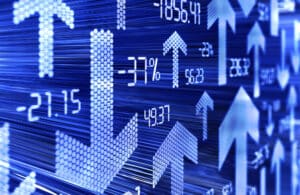In last quarter’s report we looked at economic growth, interest rates, and the probability of a recession versus a soft landing. The good news is that the most recent economic data indicates that the US economy is heading for a soft landing. The official Bureau of Economic Analysis Advance Estimate of third quarter GDP growth will not be released until October 30th. However, the Federal Reserve Bank of Atlanta uses a model that serves as an ongoing indicator of changes in GDP called GDPNow. The GDPNow estimate for the third quarter was released on September 27, 2024 at + 3.1%, a slight increase from 3.0% in the second quarter.
The Employment Situation report from the U.S. Bureau of Labor Statistics (BLS) on October 4 provided additional evidence that our economy remains healthy. The new jobs number came in at 254,000 versus an expected 150,000 and the unemployment rate ticked down 10 basis points to 4.1%.
The Fed cut the fed funds rate by 50 basis points at its September meeting based upon “confidence that inflation is on a sustained path” toward their 2% target. This is the “confidence” they have been waiting for to cut rates. Further, on September 30, Chairman Powell stated that the economy was in “solid shape” and that future interest rate cuts “would occur at a measured pace intended to support a still healthy economy.” While there are no guarantees, it sure looks like inflation is abating and the economy is still growing.
That said, we had a fair amount of market volatility in the quarter. Even with the volatility, the S&P 500 was up 4.77% in a quarter in which we saw it drop 8.5% on August 5th only to climb up 8.9% over the next twenty days. September is normally a volatile month every year. In fact, over the last 10 years the S&P has declined an average of 2.9% in September. This September it was up 5.2%. Short-term fluctuations in the market have been caused by concerns about a potential recession and its impact on earnings, inflation and interest rate movements, geopolitical unrest and market technical factors. In contrast, long-term valuations are affected by real and potential earnings growth, dividends and changes in valuation metrics.
This year we have seen near-term volatility influenced by a variety of factors. The August 9th market drop was the result of a weak labor report, while the gains through the end of August are attributed to expectations of a September rate cut. On February 24 ,2022 Russia invaded Ukraine and the market dropped 17.3% over the following eight months before climbing again.
Volatility can be exacerbated by automated trading programs that react to market technicals as well as other volatility triggering events because they act so quickly. It is estimated that today between 70% and 80% of all market trades are initiated by automated trading programs rather than manually. Day traders make a living off of volatility while long term investors view it as short-term fluctuation in an otherwise long-term upward trend. The graphic below shows the cost of missing days in the market. Over a ten-year period, missing the ten best days would have led an investor to miss 64% of the returns that could have been earned by staying invested. Notice that seven of the ten best days were during bear markets. Given the extremely low chances of perfectly timing every market wobble, we recommend the “stay invested” approach. For the long-term investor, time in the market is far more important than timing the market.

This graphic comes from Visual Capitalist (https://www.
In summary, GDP is growing at about a healthy 3%, unemployment is relatively low, inflation looks like it is headed for 2%, interest rates are expected to continue to decline and consumer sentiment appears relatively strong. Natural disasters such as hurricanes Helene and Milton cause significant pain and suffering to all those who lose loved ones, their houses, and their belongings. However, the billions of dollars that will have to be spent to repair and replace the damage caused by these storms will act as a stimulant to the economy for the next year or possibly more. Headwinds we could face in the near term include geopolitical unrest, higher oil prices, the uncertain political environment, and other unforeseeable events such as the pandemic.
In spite of these potential headwinds, the U.S. economy is resilient and will likely survive and prosper in the future just as it has in the past. Thank you for honoring our firm with your business and have a great fall season!
This material is for general information only and is not intended to provide specific advice or recommendations for any individual. There is no assurance that the views or strategies discussed are suitable for all investors or will yield positive outcomes. Investing involves risks including possible loss of principal. Together Planning has a reasonable belief that this marketing does not include any false or material misleading statements or omissions of facts regarding services, investments, or client experiences. Together Planning has a reasonable belief that the content will not cause an untrue or misleading implication regarding the adviser’s services, investments, or client experiences. Any economic forecasts set forth may not develop as predicted and are subject to change. Any references to markets, asset classes, and sectors are generally regarding the corresponding market index. Indexes are unmanaged statistical composites and cannot be invested into directly. Index performance is not indicative of the performance of any investment and do not reflect fees, expenses, or sales charges. All performance referenced is historical and is no guarantee of future results.
Market projections or investment growth, including those in examples, are not indicative of future results, should not be considered specific investment advice, do not take into consideration your specific situation, and do not intend to make an offer or solicitation for the sale or purchase of any securities or investment strategies. Investments involve risk, including changes in market conditions, and are not guaranteed. Be sure to consult with a qualified financial advisor and/or tax professional before implementing any strategy discussed herein. FIRM NAME is a SEC registered investment advisor.


